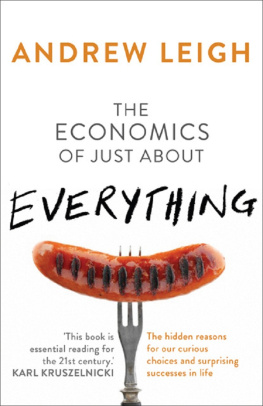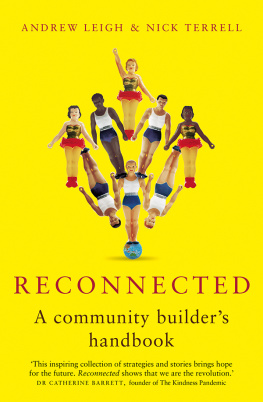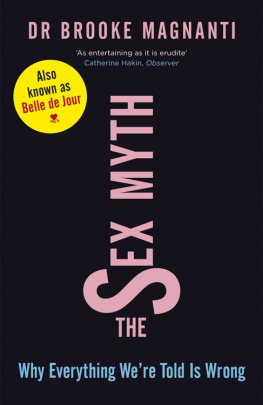PRAISE FOR RANDOMISTAS
Randomistas is a tour de force an engaging, passionate, how-to account of randomised experiments. After reading Leighs book, youll be baffled at the many businesses and governments yet to catch on. Fortunately, Leigh also offers a simple guide that anyone can follow. If the next generation of policymakers follows his advice and lets hope they do this book will literally change the world.
DAVID HALPERN, head of the UKs Behavioural Insights Team, author of Inside the Nudge Unit
Randomistas takes the reader on a great journey about how data and experiments can make the world a better place, one policy at a time.
DEAN KARLAN, professor of economics at Yale
The subject of this book could hardly be more vital: are we humble enough to admit we may be wrong, and do we care enough to learn? Randomistas is rigorous, impassioned and tremendous fun. Everyone should read it.
TIM HARFORD, author of The Undercover Economist and Fifty Things That Made The Modern Economy
Packed with tantalising tales, Randomistas is essential reading for anyone interested in debunking myths and uncovering hidden truths.
STEVEN LEVITT, co-author of Freakonomics

ANDREW LEIGH is the Shadow Assistant Treasurer and Federal Member for Fenner in the Australian Parliament. Prior to being elected in 2010, he was a professor of economics at the Australian National University. Andrew holds a PhD in public policy from Harvard, having graduated from the University of Sydney with first-class honours in Law and Arts. He is a Fellow of the Australian Academy of Social Sciences and a past recipient of the Economic Society of Australias Young Economist Award. Andrew is a keen marathon runner and hosts a podcast titled The Good Life on living a happy, healthy and ethical life. He lives in Canberra with his wife, Gweneth, and their three sons.
BY THE SAME AUTHOR:
Choosing Openness: Why Global Engagement is Best for Australia
The Luck of Politics
The Economics of Just About Everything
Battlers and Billionaires: The Story of Inequality in Australia
Disconnected

Published by La Trobe University Press in conjunction with Black Inc.
Level 1, 221 Drummond Street
Carlton VIC 3053, Australia
www.blackincbooks.com
www.latrobeuniversitypress.com.au
Copyright Andrew Leigh 2018
Andrew Leigh asserts his right to be known as the author of this work.
ALL RIGHTS RESERVED.
No part of this publication may be reproduced, stored in a retrieval system, or transmitted in any form by any means electronic, mechanical, photocopying, recording or otherwise without the prior consent of the publishers.
9781863959711 (paperback)
9781743820278 (ebook)

Cover design by Design by Committee
Cover image: Bigstock
Text design and typesetting by Marilyn de Castro
SCURVY, SCARED STRAIGHT AND SLIDING DOORS
A s Commodore George Ansons six warships rounded the tip of South America, he knew his plans were unravelling. Commissioned by the British government to capture Spanish colonies in Panama and Peru, Anson had been at sea for half a year. The seas were rough and a Spanish squadron was chasing him, but the greatest threat to the men on board was a disease: scurvy.
Ansons expedition left England in 1740 with 1854 men. Four years later, just 188 of them returned. Of the eight ships that set out, only one made it back. Writer Stephen Bown describes the voyage as the worst medical disaster ever to take place at sea. Six months in, men were dying daily. At first, the corpses were sewn into their hammocks and thrown overboard. But after a time the living sailors became too weak to deal with the dead, and they were left below deck, where they had drawn their last breaths.
Sailing an eighteenth-century warship required many men. Anticipating that some would die of scurvy, captains often took along extra personnel. But Ansons losses exceeded expectations. With few men having the strength to work, some of the warships crashed into rocks off South America. One ship, the Wager, was ripped apart on the jagged rocks of southern Chile. Some of the sailors drowned because they were too weak to swim ashore.
Scurvy affects the bodys connective tissues. At first, victims feel tired and uncoordinated. They bruise easily and their legs begin to swell. Then their gums become inflamed, their breath grows foul and their skin becomes blotchy. Sailors were shocked to see old battle wounds beginning to bleed and bones that had healed separating again. An anonymous surgeon wrote of his own afflictions with the disease: It rotted all my gums, which gave out a black and putrid blood. My thighs and lower legs were black and gangrenous, and I was forced to use my knife each day to cut into my flesh in order to release this black and foul blood... And the unfortunate thing was that I could not eat, desiring more to swallow than to chew. In the final stages, patients gums swell up so much they cannot eat. Internal bleeding leads to death.
During the age of sail, more than 2 million sailors died from scurvy, more than from skirmishes, storms and shipwrecks combined. Put another way, a British sailor in the Seven Years War had less than a 1 per cent chance of being killed in action, but a 72 per cent chance of dying from scurvy.
Everyone had their own theory on how to fight the disease, with doctors variously proposing wine, ginger and salts. But because none of the remedies was carefully tested, scurvy continued to run rampant. In the absence of evidence, whether a doctors crackpot solution was adopted depended on his status and confidence. Sailors continued to die in their thousands.
Then, in 1747, a 31-year-old ships surgeon by the name of James Lind ran a remarkable experiment. Several months into the voyage of the HMS Salisbury, most of the crew were affected by scurvy. Lind decided to try different treatments on twelve sailors with advanced scurvy, as similar as I could have them. He took other peoples theories and found a way to test them. Linds randomised trial tested six treatments, with each being given to a pair of sailors. The first group got a litre of cider, the second 4 millilitres of sulphuric acid (elixir of vitriol) and the third 80 millilitres of vinegar. If those last two treatments werent bad enough, the fourth group were made to drink 250 millilitres of seawater, while the fifth group got a mixture of nutmeg, garlic, mustard-seed, horseradish, balsam of Peru and gum myrrh. The sixth group received two oranges and one lemon. Apart from the treatments, all the patients were fed the same diet and kept in the same part of the ship.
It didnt take long for the experiment to show results. Lind reported that the most sudden and visible good effects were perceived from the use of oranges and lemons, to the extent that one of the patients who had been given citrus fruit was ready to return to duty in less than a week. By contrast, the patients given acid, vinegar and sea-water did not improve. Given that sulphuric acid was the British Navys main treatment for scurvy, this was an important finding.
The results were clear, but, as any researcher knows, a convincing result doesnt immediately lead policymakers to change their minds. It took Lind six years to write up the results, in a book titled
Next page



















